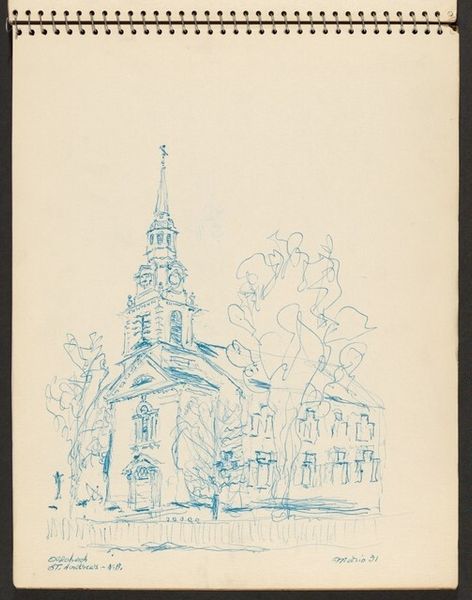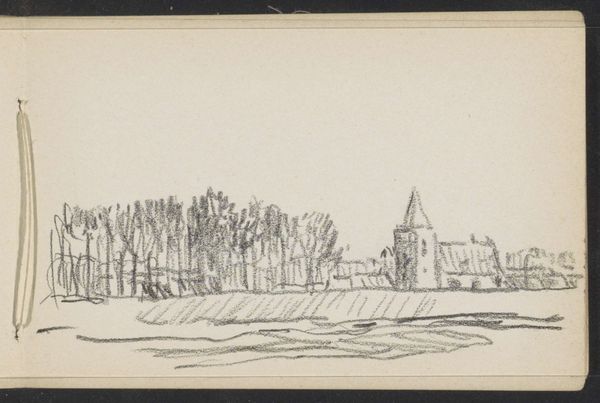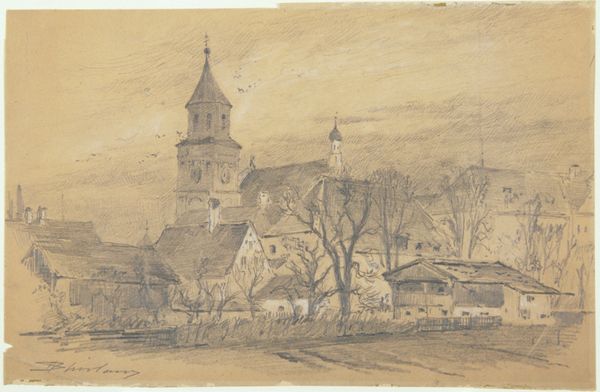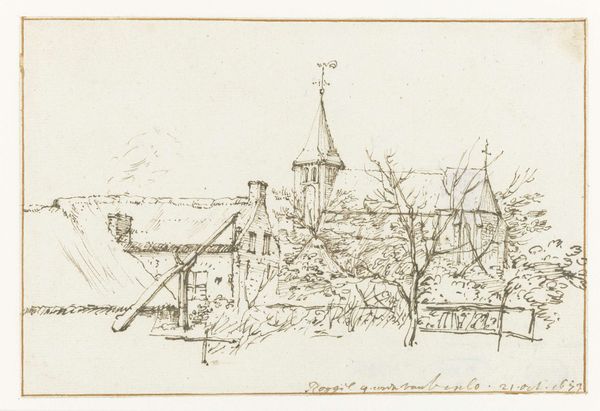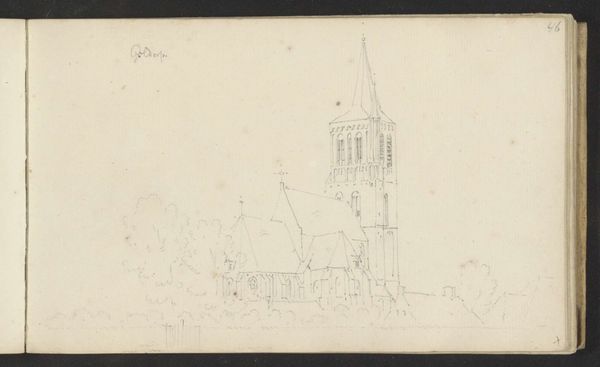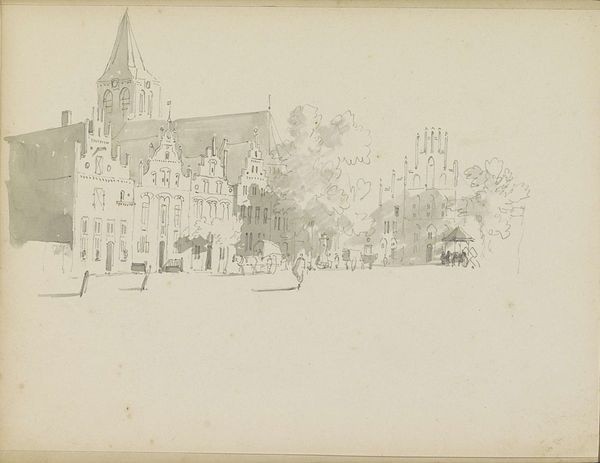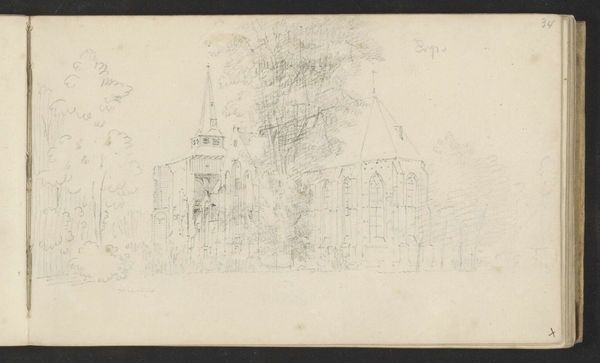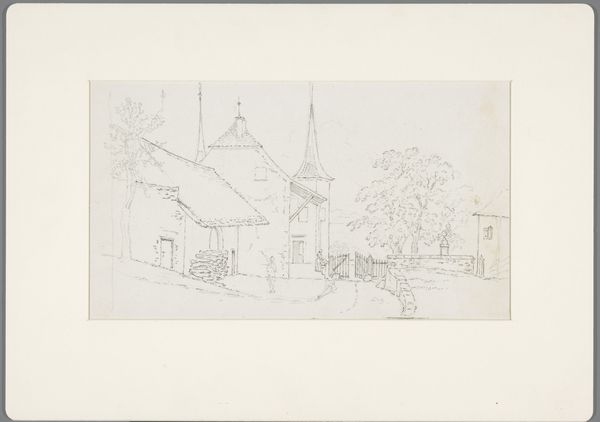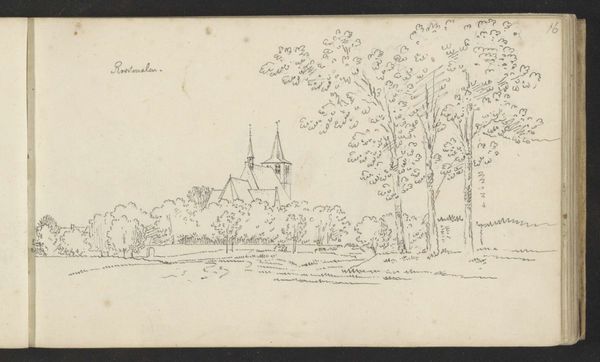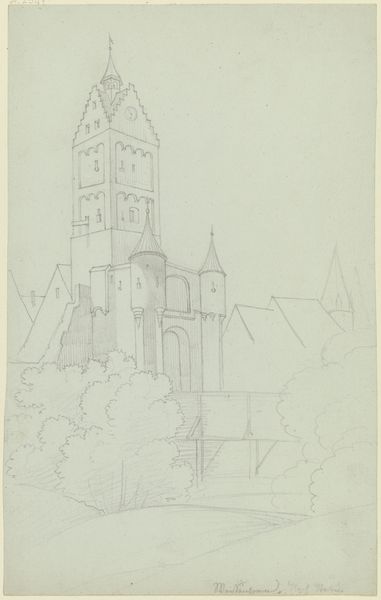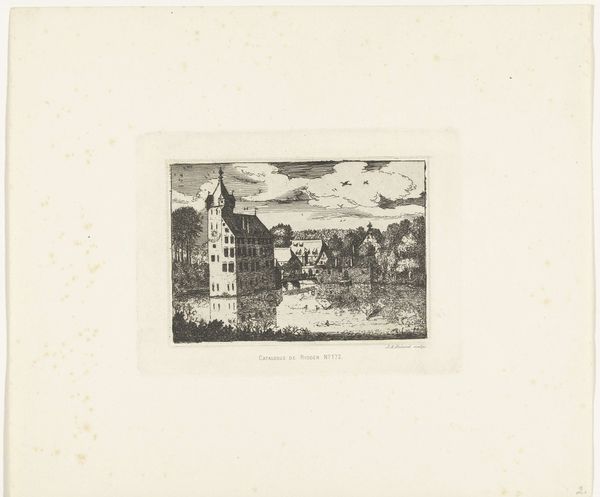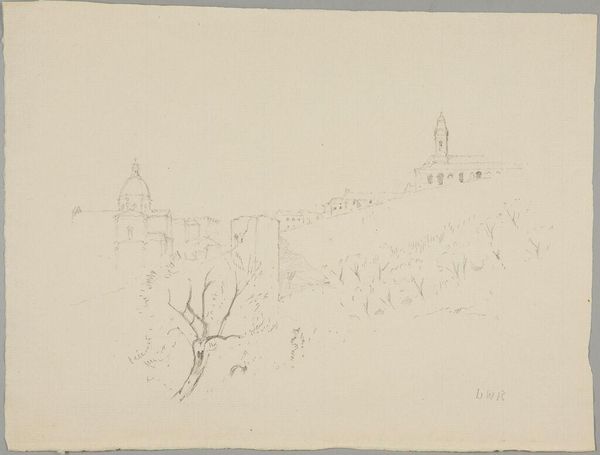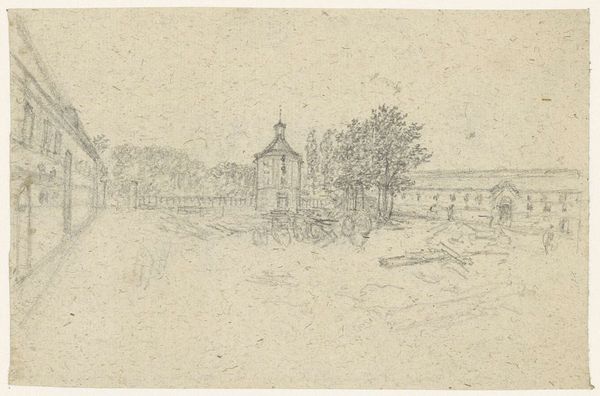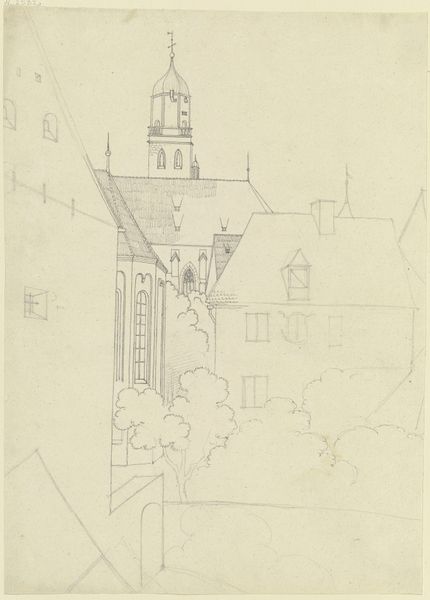
drawing, pen
#
drawing
#
pen drawing
#
landscape
#
pen
#
cityscape
#
modernism
#
realism
Dimensions: sheet: 27.94 × 35.24 cm (11 × 13 7/8 in.)
Copyright: National Gallery of Art: CC0 1.0
Curator: Looking at John Marin’s pen drawing from 1951, titled "St. Johns River Country, New Brunswick, Canada", I’m struck by its deceptively simple composition. Editor: It feels sparse, almost like a quick memory sketched down. The blue lines against the stark page evoke a sense of fleeting time, like a forgotten postcard discovered years later. Curator: Blue often symbolizes serenity, but also distance, wouldn't you say? Notice how he uses repetitive strokes to depict architectural features. Churches here dominate the skyline. They stand for a certain cultural dominance but, from my perspective, suggest Marin felt ambivalent about that traditional authority, representing its solidity but also its potential constraints. Editor: Absolutely. Given the history of religious institutions and their role in colonialism, the almost ghost-like rendering of these structures seems laden with subtext. There’s a visual push-pull between these prominent landmarks and the somewhat gestural representation of the people on the path. It highlights a potential tension, subtly questioning who gets to define place and belonging within it. Curator: Churches throughout history often serve not only as religious hubs, but also markers of communal identity. Considering Marin's modernist leaning, this quick sketch manages to engage deeply with the history and identity of New Brunswick, all by merely capturing its architectural style with what at first sight looks to be an extremely simplistic sketch with blue ink. Editor: I agree. And because the entire image, although static, seems about to collapse and start flowing, it brings this feeling of uncertainty about tradition in general, and invites the viewer to wonder if religious places still act as a nexus in modern society or whether the role has been diluted to the point that buildings are empty shells just waiting to disappear or reinvent themselves completely. This idea certainly adds to the depth of the image. Curator: The drawing provides a lens for understanding our relationship with institutional power within a broader landscape. Its sketched, vulnerable aesthetic gives it great complexity, and helps consider our collective cultural memory. Editor: It is the subtlety of the art, its visual whispers, that compel a re-examination of the symbols shaping social fabrics that define cultural places today.
Comments
No comments
Be the first to comment and join the conversation on the ultimate creative platform.
